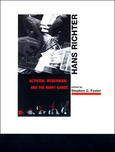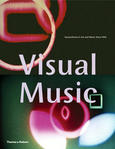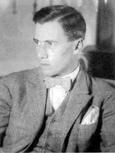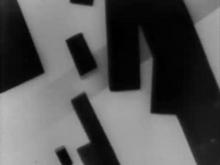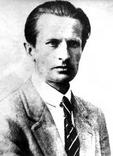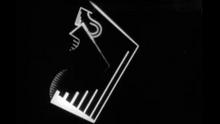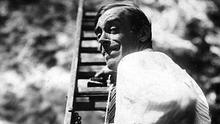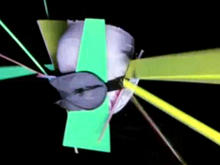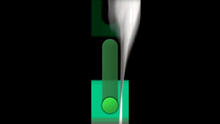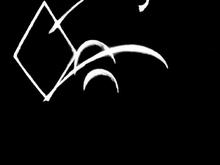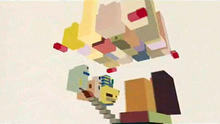Rhythm 21
(1921-25)- original title: Rhythmus 21. An early, abstract animation by Hans Richter composed solely of squares and rectangles that change shape. This another attempt by the artist to apply musical principles to screen images.
Hans Richter's first film, Rhythm 21, stands at the very beginning of the avant-garde film movement. For the first time, a film has utilized the movie screen as a directors substitute for the painters' canvas, as a framed rectangular surface on which a kinetic organization of purely plastic forms is composed. For normally, the movie screen is perceived as a kind of window, more or less arbitrarily circumscribed, behind which an illusion of space appears. In Rhythm 21, high contrast, it is a planar surface activated by the forms upon it. Thus its forms, like those of abstract painting of its time (especially Mondrian and Van Doesburg), have no physical existence except on the screen, nor do we sense their lateral extension beyond the limits of the screen as is usually the case with images created by camera vision. In Rhythm 21, the screen is articulated by movements of mathematical percision and maximum of graphic clarity. Its content is essentially rhythm, the formal vocabulary is elemental geometry and the structural principle is counterpoint of contrasting opposites. (Standish D. Lawder)
Source: time4time
Some of most repeated and published misinformation in the literature of Visual Music are the errors dating Hans Richter's films. Hans Richter was not the first abstract filmmaker, and he did not make the first abstract film (as he claimed). He did not complete or screen Rhythm 21 in 1921. Though his own texts claim this date, a number of scholars have disproven this. Today, sometimes the date 1921-24 is used for Rhythm 21, but it should perhaps be 1921-1925. We recommend a book which attempts to sort this all out: Goergen, Jean-Paul. "Hans Richter. Film ist Rhythmus," published in 2003. Available through Arsenal Institut für Film und Videokunst, Berlin; Nr. 95 in their Kinemathek series.
As Goergen has explained to us, "The only film by Richter that passed the German censorship and was shown officially and in public was a film called Film ist Rhythmus (not preserved under this title) presented at the second screening of the matinee Der absolute Film in Berlin, 10.05.1925." Thus the claims of 1921 or 1923 for a Richter film are definitely incorrect. It may even be finally in 1951 that these early Rhythm films were edited and released. Richter is known to have attempted to rewrite the early history on other occasions as well.
In the CVM archive we have a handwritten letter from Oskar Fischinger to Hans Richter (June 16, 1947), in which Oskar writes about Richter's History of the Avantgarde – "My own begin [sic] was very much different from what you write. In this 5 or 6 years you write about me, not one word is true. I started not as a painter, did not start my first attempts 1929, did not work with Ruttmann on Melodie of the World. And of course did not translate music in optical expressions." Fischinger also writes about proof that Ruttmann's film Opus 1 was shown in 1921 (which would make Richter's claim of being first – simply false).
Source: Center for Visual Music, May 2010 Newsletter, Section 4
